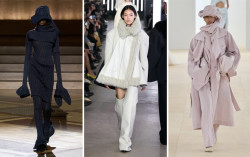
October 22, 2009
Hair Piece
Or, how an unsuspecting foreigner got dragged into a life of close shaves, five-color dye jobs—and the dreaded Persian flaw
By Metropolis
Originally published on metropolis.co.jp on October 2009

Photos courtesy of Matt Shannon
Late last summer, I was stopped by a polite, if overly apologetic, young man. He introduced himself as Hiroyuki, and asked if I could be his model for “cutting practice.” His request made more sense when I read “hair stylist” on his business card, but I still wasn’t sure exactly what he was asking me to do. Not wanting to be late for my train, or reveal my poor Japanese, or give a bad impression of foreigners, I took his meishi, thanked him for this wonderful opportunity, and said that I’d call him back soon enough with an answer—at the moment, I’m not sure of my schedule, etc. I really had no idea what he was talking about, but I could tell that in some way he saw my large head as a kind of trophy.
I spoke briefly with my girlfriend about the matter. Don’t we know a model or two? Do hair models get free clothes and time on yachts, too? No answers were forthcoming, so I called Hiroyuki and set up an appointment. In the absence of any real information, I was spending too much time entertaining equal parts fear and fantasy. My mind was at ease when we met later in the week.

Hiroyuki picked me up from Omiya station at around 8pm, and I met the owner of his salon and two other young barbers. In all, there were eight young men living in the second floor room above the shop—some of them worked there, while others were based in Ikebukuro. Downstairs, several of the men were setting up heavy, rugged clamps on a folding table, clamps I imagined to be used for lighting and photography of some sort. Instead, they produced plastic heads from their bags—slightly more male than androgynous, all with dark, straight hair. My plastic colleagues were never late, and couldn’t communicate. Later on, I would have difficulty understanding why Hiroyuki preferred my company to theirs…
A few other young stylists came down from the apartment. One set out his bag of scissors, combs, and other instruments; another washed his plastic head in a sink. All were preparing for the night of practice ahead, one that began between 8 and 9 in the evening and would conclude as late as 2 in the morning. Many of us have observed similar scenes in hair salons at night, perhaps interpreting it as a one-time event, or something else of a similar, isolated nature. This, I learned, is not the case.

My few minutes of speculating as to what might be motivating all these men to ganbare through the night came to a close with Hiroyuki’s return to my chair. He had planted me there before taking a call, and now appeared more than ready to begin. But begin what? We hadn’t actually talked about what was going to happen in the next half hour, let alone beyond that.
Sheepishly, he apologized and excused himself, this time returning with a bizarre stack of pamphlets and journals from previous hair cutting competitions. “Classic Cut and Style,” he informed me, referring to the official name for my intended hairdo. I looked down, not sure of what was in front of me. It appeared to be photos of very serious men (or serious mannequins) sporting intimidating flattops of unusual height and incredible detail—five-color dye jobs, woven back and sides, combing patterns evoking flames or lightning. Some wore bolo ties with golden clasps and pearls; others were adorned in regalia befitting of an exotic regime. Nearly all had pork chops of sizable girth (this last one indicative of a trend that’s now somewhat passé). I looked at Hiroyuki, who smiled, his hands now placed on my shoulders. “You, Classic Cut and Style. My model, Matt-sama, my model!”
I was now grasping the sides of my chair in preparation to escape. Hiroyuki attempted to spin and lower me into position for shampooing, but my feet lodged between the floor and pedals prevented it. I caught his eyes in the mirror, gave him a pleading stare, and received only resolute smiles. Out of my field of vision, I heard a door open, and watched Hiroryuki’s body fall into form as his attention directed to a figure behind me. The Master had entered the room.
The reverence given to The Master is without irony, without an ounce of hesitation or doubt. The title of “Master” was earned performing above all others at national and international hairstyling competitions. A successful showing at these events can lead to significant coverage in industry magazines, employment at prominent salons, and sponsorship from health and beauty vendors—in other words, everything a stylist needs to succeed. Standing before me was one such living example, the man who served now as sensei to the young hopefuls in the room.
To enter into these competitions is not something one can do alone. As with other trades, apprentice hairstylists must first be granted membership in a school or stable, and from there they may find sponsorship and training. Over a period of two to four years, stylists may work five or six days a week, practice alone or in groups in the evenings, and share living spaces. Only a few opportunities to compete exist each year; repeat failures will only serve to harm your reputation, while a clear win allows you to retain the title of Champion and move up the ranks. Judging, though subjective, is far from random—the contestant must craft a form that’s in touch with the tradition of his chosen style while at the same time pointing towards new forms that fit with future trends. Practical competency is also necessary, especially in handling the “Persian flaws”: a judge will assign a point on the model’s head where the hair must be cut several centimeters lower than the rest; it is up to the barber to properly conceal this flaw.
The practice necessary to deal with these requirements far exceeds what a stylist would encounter in a usual day of work, and the pressure to win is exacted from each moment of their young professional lives. Hiroyuki confessed to never having produced the technically masterful but terrifying Classical Cut and Style for a paying customer—thus, every chance to practice is absolutely crucial.







